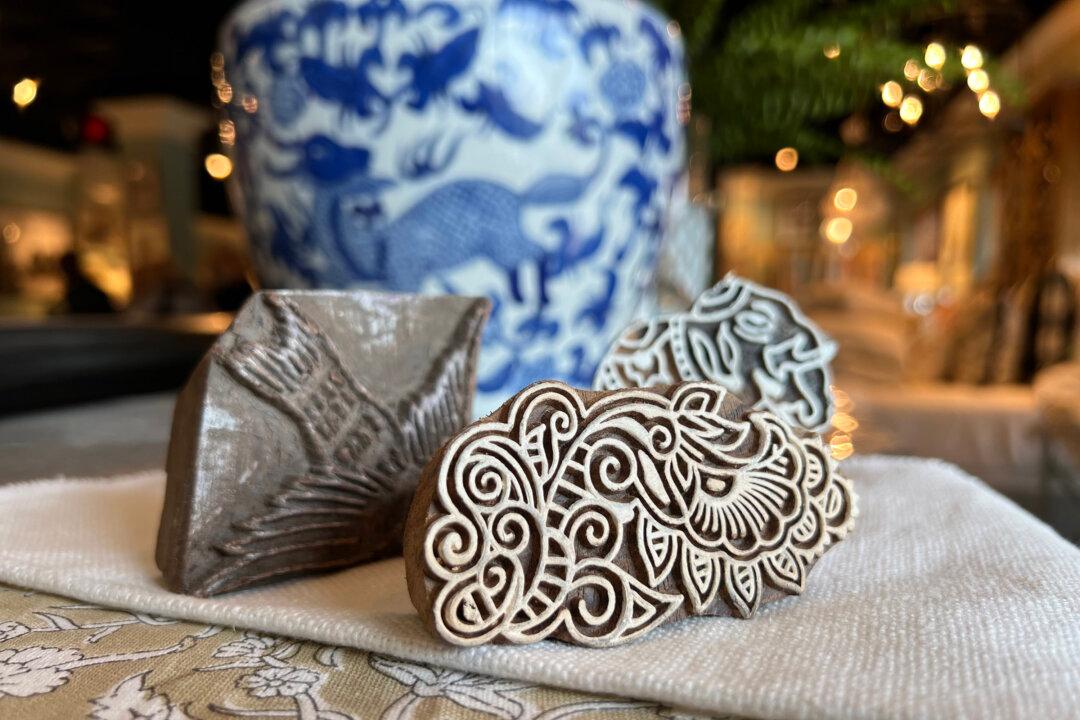In a day and age where most everything we purchase is mass-produced, there’s something magical about the beauty found in the slowness of handmade goods. Block printed textiles are lovely in part because of homespun nature of the craft.
I fell in love with the art of block printing on a trip to India many years ago. My goal was to see the intricate process in person, but sadly a stomach bug prevented me from doing so. Thankfully, I was able to bring back a set of block printing blocks from the trip that I still have today.
What is Block Printing?
As explained by Nick Rowan for Tiny Workshops, a site dedicated to creators from around the world, lock printing is a relief printing technique that uses a carved material (historically made from hard woods, but modern techniques can include linoleum or rubber) to transfer ink onto fabric (or paper). Relief printing is a general term for printmaking techniques in which the printing surface is cut away so the image alone appears raised on the surface.
The block then serves as a stamp, where colored ink is added, with the final product resulting in a mirror image of the carving. Prints can range from small images intended to be repeated in a pattern to large artworks that require a large printing press to manufacture. When multiple colors are used, a block is created for each corresponding color and design, and then layered one at a time for the final motif. One of the things I love the most about it are the beautiful imperfections that happen as a result of the handmade process.
India is one of the largest manufacturers and exporters of block prints in the world. Historically, block printing has been used in India since at least the 12th century. One theory states that Indian artisans borrowed the technique from China, and later became its own culturally distinct art form.






